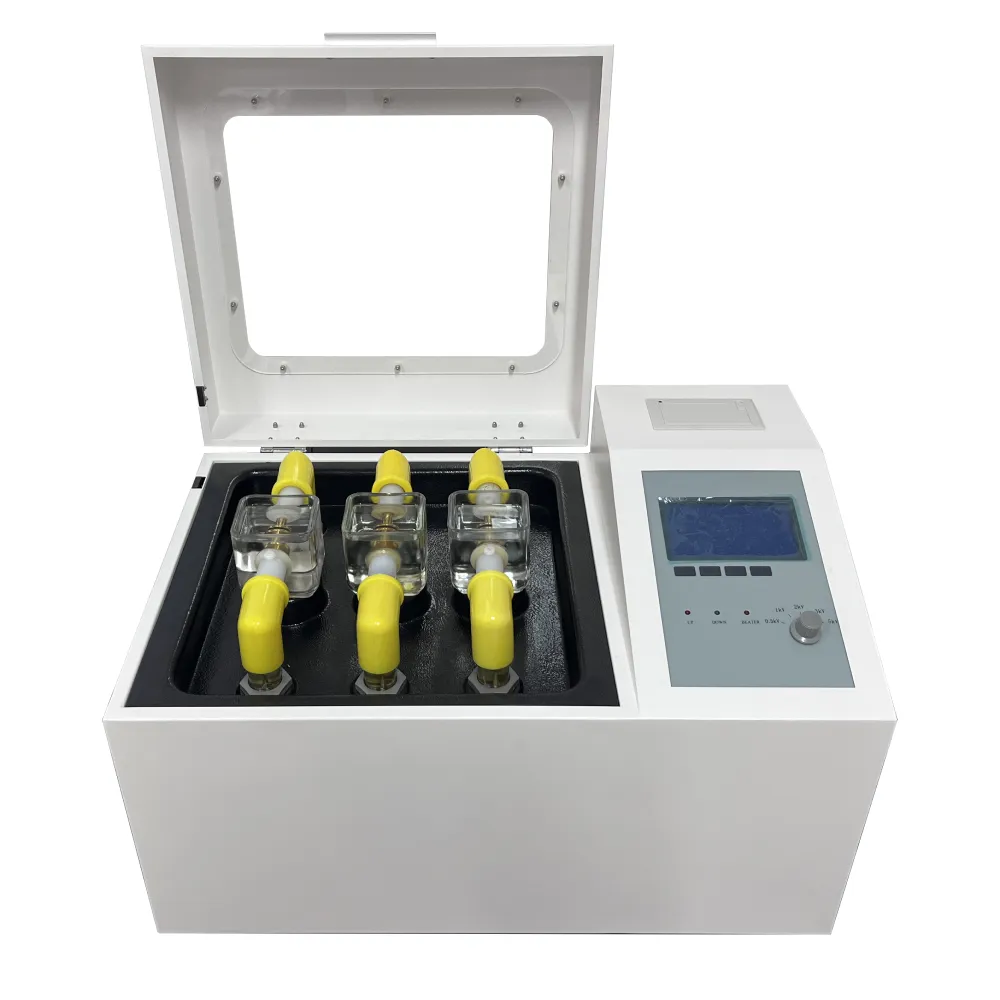 English
English


flash and fire point tester
Understanding Flash and Fire Point Testing Importance and Applications
The safety and handling of flammable materials are critical considerations in various industries, including petrochemicals, pharmaceuticals, and manufacturing. One of the fundamental aspects of ensuring safety in the handling of these materials is the understanding of their flash point and fire point. This underscores the importance of flash and fire point testers in evaluating the ignition characteristics of liquids.
What are Flash Point and Fire Point?
The flash point of a liquid is defined as the lowest temperature at which its vapor forms an ignitable mixture with air. When the temperature reaches this point, a small flame applied momentarily can ignite the vapor. The fire point, on the other hand, is the temperature at which the vapor can sustain combustion for a specified time when exposed to an ignition source. Both these properties are crucial in assessing the flammability of liquids and determining the safe handling, storage, and transport practices.
Why is Flash and Fire Point Testing Important?
Understanding the flash and fire points of a substance is vital for several reasons
1. Safety Precautions Knowledge of a material's flammability helps in implementing appropriate safety measures during its storage and transportation. Materials with low flash points pose significant risks and require special handling to prevent accidents.
2. Regulatory Compliance Many industries are governed by strict regulations regarding the handling of hazardous substances. Flash and fire point testing helps companies comply with safety standards set by organizations such as OSHA (Occupational Safety and Health Administration) and NFPA (National Fire Protection Association).
3. Risk Assessment In industries where flammable liquids are used, conducting flash and fire point tests allows for a comprehensive risk assessment. This includes evaluating the potential hazards in the workplace and implementing risk management strategies.
4. Material Selection In product development, understanding the flammable characteristics of materials assists engineers and designers in selecting the right substances for specific applications. This is crucial in preventing incidents during manufacturing processes.
Methods of Testing
flash and fire point tester

There are various methods for determining the flash and fire points of liquids, each with its advantages and limitations
. The most common methods include- Closed Cup Test This method measures the flash point in a sealed container, allowing for a more accurate representation of conditions under which ignition may occur. Popular closed cup testers include the Pensky-Martens and Tag closed cup methods.
- Open Cup Test This method involves exposing the liquid to the air in an open container. Although easier to perform, this method tends to yield higher flash point results compared to closed cup tests, as vapors can escape more freely.
Applications of Flash and Fire Point Testers
Flash and fire point testers serve various industries
- Petrochemical Industry These testers are integral in assessing the safety of fuels, solvents, and other chemicals.
- Food and Beverage In food processing, it's critical to ensure that oils and other ingredients comply with safety standards.
- Pharmaceuticals Safety data sheets for chemicals used in drug formulations require flash and fire point information for compliance and risk management.
- Environmental Monitoring The testing helps in assessing the environmental impact of spills or leaks of hazardous materials.
Conclusion
Flash and fire point testers are essential tools in evaluating the flammability of liquids, providing vital information that aids in ensuring safety and compliance across multiple industries. Understanding the characteristics of a material through these tests ultimately protects people, property, and the environment from the risks associated with flammable substances. As technology advances, the methods and equipment used for flash and fire point testing will continue to evolve, enhancing safety standards even further.
-
Differences between open cup flash point tester and closed cup flash point testerNewsOct.31,2024
-
The Reliable Load Tap ChangerNewsOct.23,2024
-
The Essential Guide to Hipot TestersNewsOct.23,2024
-
The Digital Insulation TesterNewsOct.23,2024
-
The Best Earth Loop Impedance Tester for SaleNewsOct.23,2024
-
Tan Delta Tester--The Essential Tool for Electrical Insulation TestingNewsOct.23,2024





